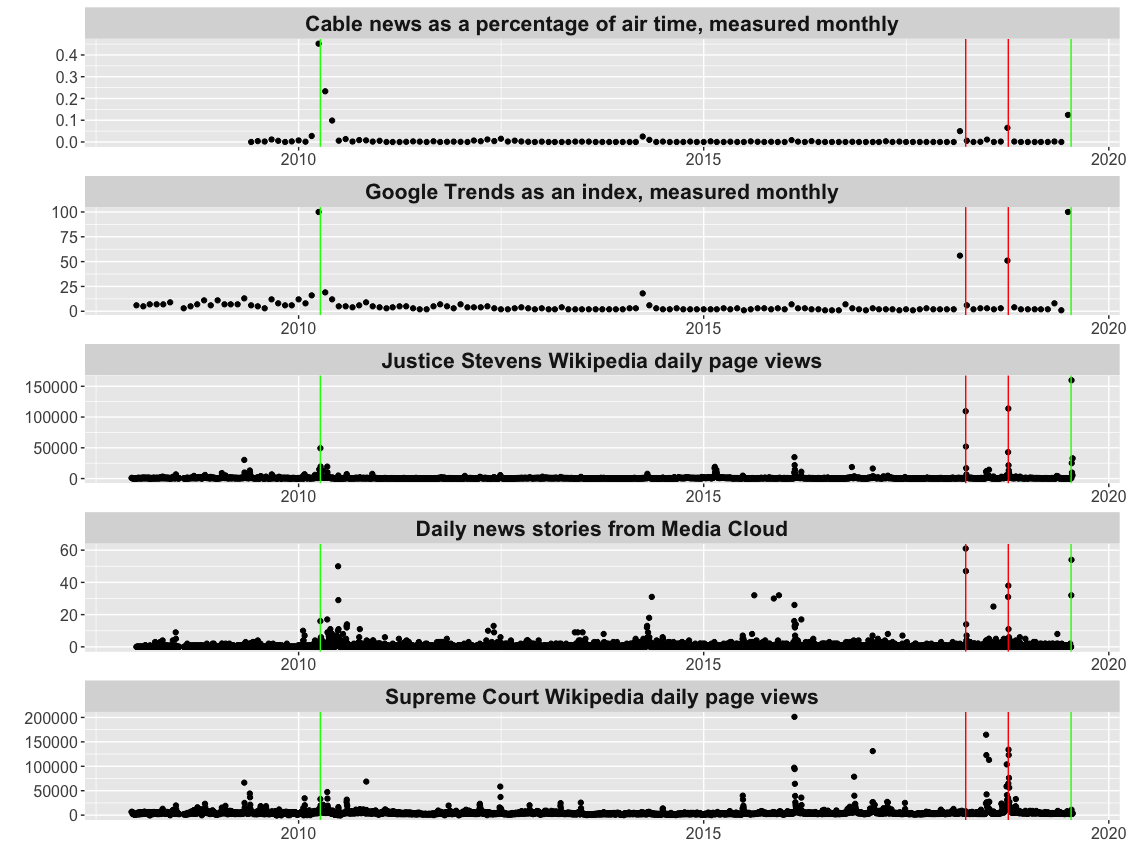Justice John Paul Stevens died on July 16, 2019 at the age of 99. He retired about a decade ago and was replaced by Elana Kagen on the bench. While relatively quiet while serving, he has written three books since and was notably critical of Brett Kavanaugh during his 2018 Supreme Court nomination hearings. Over the last few years I have been investigating when the general public becomes interested in the Supreme Court as an institution, in the Court’s members, and in the cases that the Court decides.
This post will look at interest generated by Stevens’ recent death. How do we know if the public is interested? I have explored two tools: Wikipedia page views and Google Trends. Wikipedia reports page views on a daily basis and these are relatively easy to access. Google reports web searching for terms, including people, and reports data through a variety of lenses, both short term and long term, reporting out an index with 100 being the highest search time period. I will also be looking at two measures of media coverage for comparison: cable news coverage as recorded by the Internet Archive and the number of news stories as collected by Media Cloud. For all of these sources, I have gone back to the beginning of the available Wikipedia page view data, December 2007.

Figure 1: Interest indicators by the media and the general public.
So what do we see? Figure 1 presents all five measure, with a green vertical line indicating the date of Justice Stevens’ retirement announcement in April 2010 and his death in July 2019. Two additional red lines have been added for his late-March 2018 call for the 2nd Amendment to be repealed and early-October 2018 comments calling then Supreme Court nominee Brett Kavanaugh unqualified to serve on the Supreme Court.
- The media coverage was high for each of the events, but cable news covered his retirements significantly more than any of the three subsequent events.
- Similarly, there is significant evidence that the public was interested in these events. Google searching was especially high for both the retirement and death. Wikipedia page views followed a similar pattern, with the exception of his retirement date.
- The day after his death, July 17, 2019,Justice Stevens’ Wikipedia page was the 2nd most viewed page with almost 160,000 views. On the date of his comments about Brett Kavanaugh, his page views ranked 10th, and his page was the 4th most viewed page on the date of his Second Amendment editorial.
- The Stevens’ events did not drive traffic to the Supreme Court Wikipedia page by themselves.
Overall, public interest in Justice Stevens is certainly related to media coverage of him, but the two do not move in lockstep. Measured by Wikipedia page views, a major source of information on the Internet, interest in Stevens was high. There is more analysis to be done on when the public becomes interested in the Supreme Court and the cases it decides.